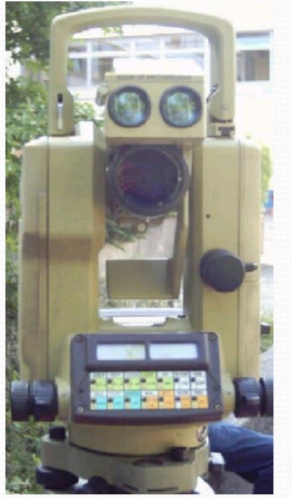Types of Compass
PRISMATIC COMPASS
SURVEYOR’s COMPASS
INSTRUMENTS USED FOR COMPASS SURVEYING
The various instruments used in the compass survey are :
Prismatic compass
Tape
Ranging rods
Tripod
Arrows
Plumb Bob
PRISMATIC COMPASS
Prismatic Compass comprises of a magnetic needle attached to the circular ring made up of aluminum.
The needle is on the pivot and will orient itself in the magnetic meridian
The line of sight is defined by the objective vane and the eye slit, both attached to the compass box.
A triangular prism is fitted below the eye slit.
The readings increase in clockwise direction.
The object vane frame can be folded on the glass lid which covers the top at box.
lever which lifts the needle of the pivot and holds it against the glass lid.
When bright objects are sighted dark glass may be interposed in to the line of sight.
Adjustments of Prismatic Compass:
The following are the adjustments usually necessary in the prismatic compass:
Centering
Leveling
Focusing the prism.
CENTERING:
The center of the compass is placed vertically over the station point by dropping a small piece of stone below the center of the compass, it falls on the top of the peg marking that station.
LEVELING:
By means of ball and socket arrangement the Compass is then leveled the graduated ring swings quite freely. It may be tested by rolling a round pencil on the compass box.
FOCUSING THE PRISM :
The prism attachment is slid up or down focusing till the readings are seen to be sharp and clear.
THE SURVEYOR’S COMPASS
WORKING OF SURVEYOR’S COMPASS
Centering
Levelling
Observing the bearing line
In this type of compass , reading is taken from the top of glass and under the tip of north end of the magnetic needle directly. No prism is provided here .
Construction and bearing system of the surveyor’s compass differs from prismatic compass .
Construction and bearing system of the surveyor’s compass differs from prismatic compass .
Uses of a compass survey (or traverse):
Map very small areas
Map in a lot of detail
Learn basic principles of scale mapping















0 Comments